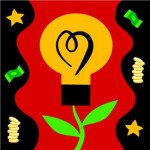The Truth behind S.A.D
Brrr……..It is indeed winter season again. Rain and breezy winds have been clattering the windows of my house. Winter season means, the days are getting shorter and the nights are getting colder. Some of us, depending on where you live, experiencing long dark nights which can be very depressing. Those who experiencing these feelings are going trough the so-called winter blues.
 Winter blues or winter depression is a general term for having mood swings during winter season. It is fairly common and it’s just a mild condition. It usually resolves on its own after a short period of time. Winter blues has also been found out to be related to stressful holiday season and remembrance of the absence of their loved ones. If this winter depression or winter blues has not been resolved, it can lead to a more serious disorder called the Seasonal Affective Disorder or SAD. Seasonal Affective Disorder is a severe type of depression related to the shortening of daylight hours. It is characterized by feeling of sadness and depression which occurs when temperature drops and days became shorter.
Winter blues or winter depression is a general term for having mood swings during winter season. It is fairly common and it’s just a mild condition. It usually resolves on its own after a short period of time. Winter blues has also been found out to be related to stressful holiday season and remembrance of the absence of their loved ones. If this winter depression or winter blues has not been resolved, it can lead to a more serious disorder called the Seasonal Affective Disorder or SAD. Seasonal Affective Disorder is a severe type of depression related to the shortening of daylight hours. It is characterized by feeling of sadness and depression which occurs when temperature drops and days became shorter.
According to Wikipedia.com (http://en.wikipedia.org/wiki/Seasonal_affective_disorder), the prevalence rate of SAD in Florida ranges at 1.4% and 9.7% at New Hampshire. It is more common in the northern parts of the United States such as in Alaska where about 10% of the people suffer from SAD. It has been found that SAD occurs two to three times more to women than in men.
Shorter days and reduced sunlight are the main triggers for SAD. Normally during the day, the brain  sends signals to the different parts of the body to keep you awake and be alert at all times. During the night, a small gland in the brain called the pineal gland produces a chemical called the melatonin which helps to go to sleep. Because of the shortening of the day and the reduced amount of sunlight, the circadian rhythm or the internal body clock will be disrupted. This is experienced by people who have SAD.
sends signals to the different parts of the body to keep you awake and be alert at all times. During the night, a small gland in the brain called the pineal gland produces a chemical called the melatonin which helps to go to sleep. Because of the shortening of the day and the reduced amount of sunlight, the circadian rhythm or the internal body clock will be disrupted. This is experienced by people who have SAD.
The key feature of SAD is that it follows a regular pattern. Each year it appears when seasons change, people affected with SAD may experience lack of energy, may oversleep, tend to be withdrawn and may put on some extra weight because they may crave more sources of carbohydrates such as cakes, candies and cookies. Other symptoms include difficulty concentrating and accomplishing tasks, withdrawal from family and friends and a decrease on sexual drive.
 The good thing is, SAD can be treated. Light therapy is considered to be the first line of treatment for SAD. It is usually administered to people who have mild symptoms. In this method, the patient sits in front of a light box for 30 minutes or more, depending upon the doctor’s advice. It has been shown to some studies that light therapy relieves SAD symptoms for as much as 70% after weeks of treatment. Light therapy is best administered early morning because if done at night it may cause insomnia. While having this treatment, keep your eyes open and face the light during therapy. Patients undergoing light therapy may experience headaches, eyestrain and nausea. However, these side effects disappear after treatment and are not long-term.
The good thing is, SAD can be treated. Light therapy is considered to be the first line of treatment for SAD. It is usually administered to people who have mild symptoms. In this method, the patient sits in front of a light box for 30 minutes or more, depending upon the doctor’s advice. It has been shown to some studies that light therapy relieves SAD symptoms for as much as 70% after weeks of treatment. Light therapy is best administered early morning because if done at night it may cause insomnia. While having this treatment, keep your eyes open and face the light during therapy. Patients undergoing light therapy may experience headaches, eyestrain and nausea. However, these side effects disappear after treatment and are not long-term.
Exercise and eating a healthy meal is very important to avoid SAD. What and when you eat has a great affect on your mood and energy. Avoid refined and processed foods (like white breads, rice, and sugar). These foods are not only devoid of the nutrients your body craves, but they zap your energy levels and can affect your mood—causing depression, lack of concentration, and mood swings.
SAD can also be treated with antidepressants such as fluoxetine, sertraline and bupropion but doctor’s advice must be needed upon taking these medications. Other treatments for SAD include Cognitive behavioral therapy (CBT), Behavioral activation and Mindfulness-based cognitive behavioral therapy (MBCT).
SAD is indeed a serious disorder that occurs not only in the United States but also in other countries. If you have a family, friend or loved one who suffers SAD, one of the easiest interventions that you can do for him or her is to be there for them and to remind them that they are not alone with this.
